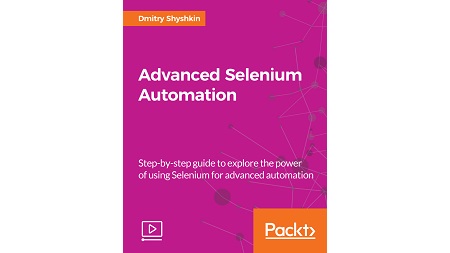English | MP4 | AVC 1920×1080 | AAC 48KHz 2ch | 1h 57m | 658 MB
Delving into the world of advanced Selenium automation
Selenium 3.0 heralds a significant change as it has been shipped after a gap of 5 years. It is only a drop-in replacement for WebDriver API users; however, it has removed the major Selenium core implementation. The Selenium WebDriver API is fully object-oriented compared with the deprecated Selenium RC. The WebDriver API provides multi-language support and runs tests on all the most popular browsers.
In this course, we focus on more advanced usage of the Selenium API to enable cross-browser testing, as well as simulating advanced user interactions with complex applications. Debugging rare test failures through advanced techniques and utilizing the specialized parts of each client library are covered as well.
A step-by-step guide with a practical approach to understand and implement advanced Selenium automation.
What You Will Learn
- Utilize advanced programming techniques to drive Selenium
- Key principles of mature test automation and software quality
- Uploading files locally and remotely
- Debugging complex test failures
- Explore the USPs and values of cross-browser testing
- Handle specialized commands and interactions
- Using data providers for data-driven tests
- Generating advanced test reports with TestNG test listeners
Table of Contents
Using Parameters and DataProviders
1 The Course Overview
2 Parameters from testng.xml
3 Parameters with DataProviders
4 CSV Files as DataProviders
Cross-Browser Testing
5 The Value of Cross-Browser Testing
6 Using BrowserDriverFactory in Tests
7 Write Once, Run Many
8 Running Tests in Parallel
Advanced Selenium API
9 Advanced User Interactions
10 Running Parallel Tests with Apache Log4j
11 Uploading Files
12 Using TestListeners
Debugging Complex Test Failures
13 Capturing Screenshots
14 Collecting JavaScript Errors From Console
15 Reading Basic TestNG Report
16 Adding ExtentReport
Resolve the captcha to access the links!
